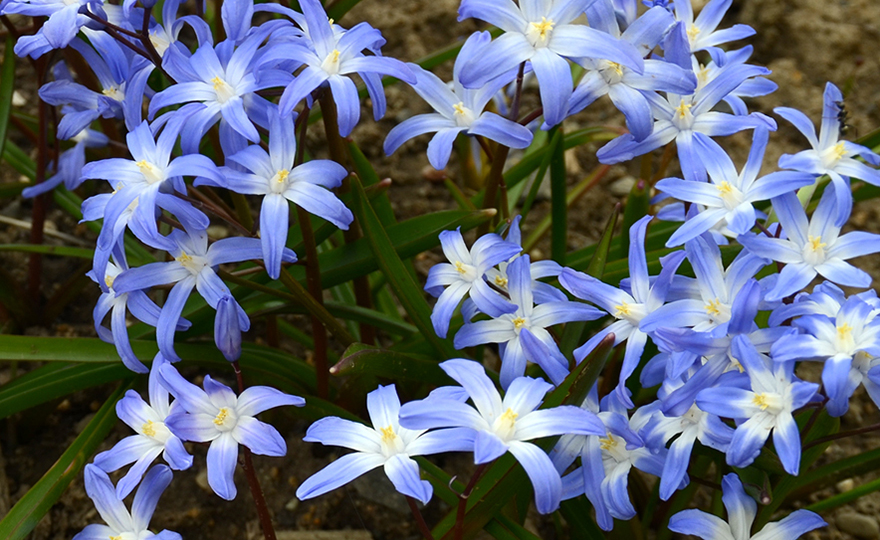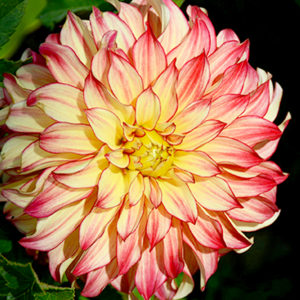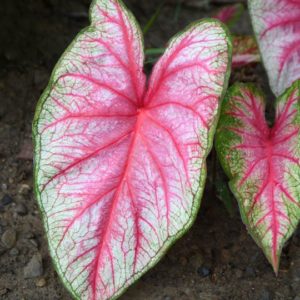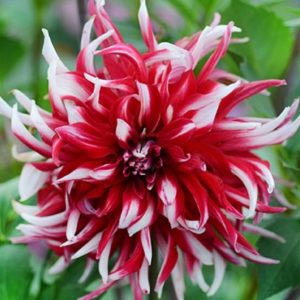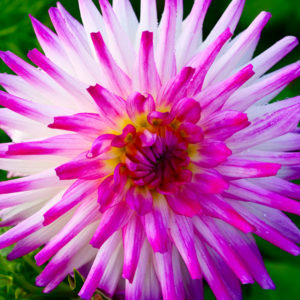Description
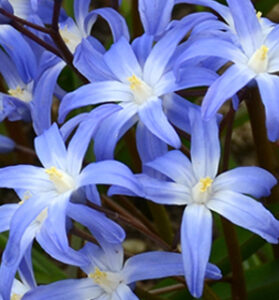 Chionodoxa,
Chionodoxa,
Forbesii Blue Giant
Chionodoxa, known as ‘The Glory of the Snow’, is a tiny plant which produces multiple flower stems. They are critter resistant which probably accounts for the fact that they alone have survived in drifts after 50-100 years. They naturalize easily and quickly, but for immediate impact they should be planted in clusters of at least 25 bulbs. They are meant to be viewed as a drift, not as single plants.
The color, blue, is the rarest of all colors found in nature. Spring is the only season where you can find an abundance of blue color if you plant for it. Chionodoxa forbesii is a flower whose name we cannot pronounce, but one that most of us have seen in the spring.
The name, Chionodoxa, comes from two ancient Greek words, chion meaning snow and doxa meaning glory, hence the nickname, Glory of the Snow.
This bulb was introduced into cultivation in 1881 when it was named to honor the naturalist, Edward Forbes, who in his travels through western Anatolia in 1842 had probably collected specimens.
Chionodoxa is native to the mountains of southwestern Turkey where it grows at the snowline above 8,250 feet. This little blue flower with its white star shaped center is an early bloomer that is deer resistant.
Each bulb produces from 4-12 flowers. The bulbs should be planted 4-6 inches deep and 2-3 inches apart. Remember to add ¼ cup of bone meal to the hole where you are planting the bulbs. Chionodoxa can be moved and divided every 3-5 years. Chionodoxa grows very well in a pot, and if growing in a pot, 5 bulbs produces a lovely effect.
They are hardy nearly everywhere from Zone 3-Zone 9.
Chionodoxa can be forced in soil. Chionodoxa actually makes an excellent pot plant. The bulbs should be planted close together – nearly touching – in a soil mixed with 1 part sand to 2 parts soil.
Bulbs are some of the easiest plants to grow. Fundamentally the process requires four steps.
- Dig a hole.
- Dust the hole with bonemeal.
- Place the bulb in the hole.
- Fill the hole with soil.
There are, however, some additional refinements which help produce even more lavish results and enhance protection from critters.
First, bulbs can and should be planted deeper than the instructions you receive on the package labels. An easy way to remember how deep to plant the bulb is to think of a quarter. If the bulb you are planting has the same diameter as a quarter or less, plant the bulb 4 inches deep. If the bulb is broader than a quarter, plant it 6-10 inches deep. Large bulbs like some alliums, camassias, standard tulips and fritillaries can easily be planted 10 inches deep. As the soil compacts days, weeks and months after planting, it produces a thinner layer of soil on top of the bulb. Planting bulbs deep helps with critter control. Moles, voles, chipmunks and squirrels are lazy little creatures, and they don’t like doing a lot of digging to reach their food.
Second, bonemeal is a must. It is an excellent source of calcium and phosphorus which help the bulbs to form a strong root system and healthy stems. For large bulbs (those bigger than a quarter), use ¼ cup per bulb. For small bulbs, dust the entire surface or hole where the bulbs will reside.
Third, small bulbs should be planted in clusters of 10 or more – 1 inch apart. Large bulbs, like allium, can stand alone, but create a much more pleasing presence in the garden when planted is clusters of 3-5. They should be separated by no more than 4-6 inches.
Fourth, bulbs usually multiply fairly quickly and once crowded will not produce blossoms. Plan to divide your bulbs in mid-summer to fall when the top growth has dried out.
These simple, easy, quick tasks are all that is required to produce a lovely bulb display year after year.
PLEASE NOTE: Camassia bulbs may not do well in pots.
If you live in Hardiness Zones 5 and higher all you need to do is mix some soil. . Check out the soil mix described in detail in our Harvesting History YouTube video. Do not use prepared soil mixes.
The Best Soil Mix for Containers
Always plant bulbs more densely in containers than in the ground. Pots as small as 6-inches in diameter can have a showy presence on a deck, porch or patio. You can use much larger pots and plant several kinds of bulbs.
Fill the pot half full, dust the soil surface with bonemeal, arrange the bulbs on top of the bone meal and fill the pot with the rest of the soil. Dust the surface of the soil with more bonemeal. Water thoroughly, but do not let the pot stand in a saucer of water.
If you live in Hardiness Zones 1-4, you must protect the pots by bringing them into an unheated garage or surrounding them with bales of straw. If you do not do this, the bulbs usually freeze and turn to mush.

